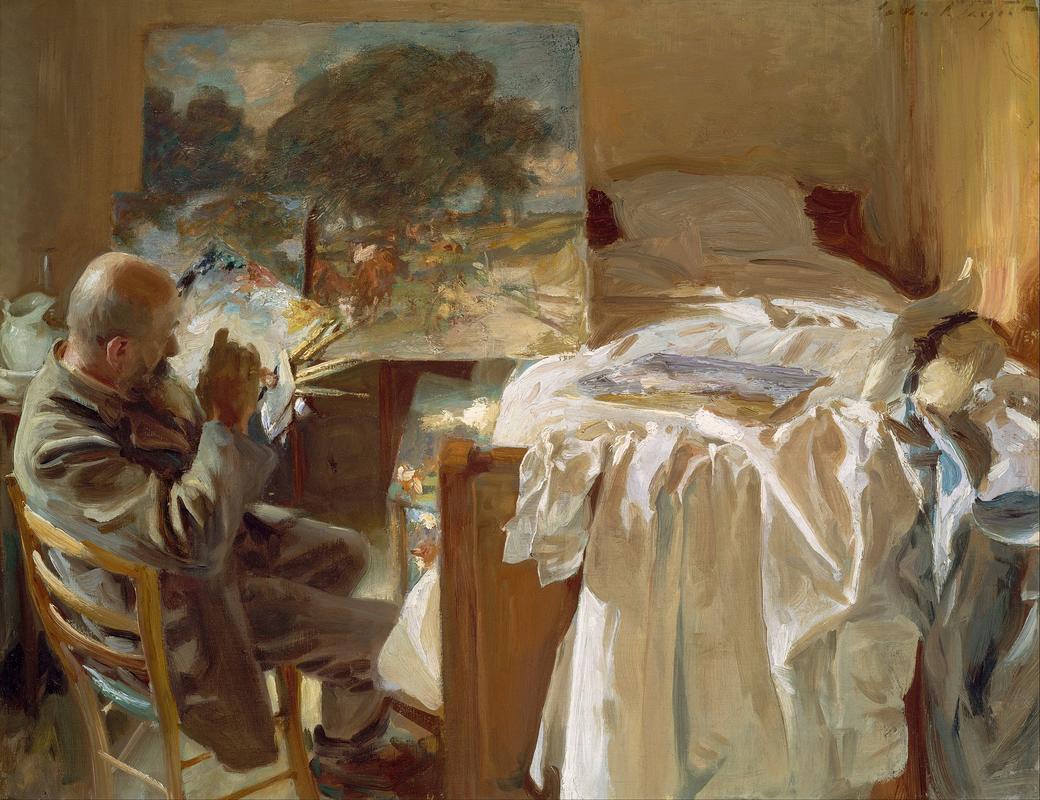More about An Artist in His Studio

Sr. Contributor
For artists like John Singer Sargent, there are no days off and certainly no vacations, even while visiting a popular vacation spot.
This drive is what separates the haves from the have-nots, the amateurs from the names we actually remember. Think about that next time you’re refreshing Instagram for the thousandth time. A devoted portraitist, Sargent’s artistic eye found subject matter everywhere he went, and he captured the likes of everyone from Monet to his dear friend Ambrogio Raffele. Like Sargent, Raffele was hard at work, even while vacationing in the Italian Alps, and his tiny hotel room became a temporary studio. When you also imagine Sargent crammed in the corner with his own canvas and easel painting Raffele, the scene really becomes a lesson in discipline and making the most of what you have.
Although Sargent and Raffele had no idea about the tiny house movement that would become a thing a century after working in this style, they utilized the space with an efficiency that would surely earn them a spot on the DIY network. The two artists were good friends, so their creative chemistry shouldn’t surprise us too much. Sargent loved to paint portraits of his friends, many of whom were fellow artists. This is just one of several portraits of Raffele, Sargent’s compatriot and an artist in his own right.
Even in his beloved subject of “the artist at work,” Sargent was always working out his own techniques. If you didn’t know any better, you’d think that Sargent incorporated some Impressionist-inspired spontaneity in this picture. If you did, you’d be fooled by Sargent’s meticulous process of getting everything just right. He added some sloppy-looking brushstrokes at the very end, once everything was planned and painted accordingly, to make himself look cool. This no doubt would make the Abstract Expressionists roll in their graves.
And yet, despite all that, this is an excellent piece by Sargent. So good, in fact, that Edward Robinson, the early-twentieth-century director of the Museum of Fine Arts, Boston, fell in love at first sight during a 1905 trip to London to visit the acclaimed artist. Luckily, the MFA had recently received $50,000 from Charles Henry Hayden, an accomplished Massachusetts artist and graduate of the School of Museum of Fine Arts in Boston. Hayden left the sizable gift to the museum upon his untimely death at just forty-five years old in 1901. Hayden’s gift became the Charles Henry Hayden Fund, which the MFA used to purchase contemporary art. In addition to this fine Sargent, the fund also provided the cash money to buy In the Loge by Mary Cassatt, Open in Ochre by Robert Motherwell, and more.
Sources
- Metropolitan Museum of Art. “Reconnoitering (Ambroglio Raffele).” Collection. https://www.metmuseum.org/art/collection/search/21441. Accessed 10 April 2020.
- Museum of Fine Arts Boston. “An Artist in His Studio.” Collection. https://collections.mfa.org/objects/31260/an-artist-in-his-studio?ctx=c…. Accessed 10 April 2020.
- Shuptrines Gallery. “Charles Henry Hayden.” Fine American Artists. https://www.shuptrinesgallery.com/shuptrine-fine-american-artists/charl…. Accessed 10 April 2020.











